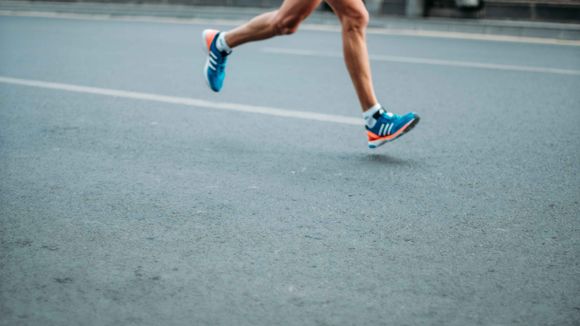Basics of metabolism
Metabolism refers to the processes that the body uses to break down nutrients, form compounds that cells can use for energy, and use these compounds to power the body's functions.
Your body releases enzymes to break down food into sugars, proteins and fats. Each cell in your body can then take them in and use them in aerobic or anaerobic metabolic processes to form adenosine triphosphate (ATP), the fuel used by the cell.
The general metabolism of your body includes muscle contraction, breathing, blood circulation, maintaining body temperature, digesting food, eliminating waste, and brain and nervous system function.
During exercise, for example, you increase metabolism in the muscles and the respiratory and circulatory systems. You need faster breathing and heart rate to deliver oxygen and nutrients to your muscles. Your body also needs to work harder to prevent overheating, such as through sweating.
Types of metabolism
There are two types of metabolism that the body uses to convert fuel (the food you eat) into energy.
- Aerobic metabolism - During aerobic metabolism, your body creates energy by burning carbohydrates, amino acids and fats in the presence of oxygen. Aerobic metabolism provides energy for exercise and other body functions (such as breathing). Examples of activities that use aerobic metabolism include walking, running, or cycling with prolonged effort. [ref. 1]
- Anaerobic metabolism - Anaerobic metabolism creates energy by burning carbohydrates in the absence of oxygen. This happens when your lungs can't deliver enough oxygen to your bloodstream to handle your muscles' energy needs. It is usually only used for short extreme moments of activity, such as when sprinting, when running or cycling, or lifting heavy weights. When there is not enough oxygen in the bloodstream, glucose and glycogen cannot be completely broken down into carbon dioxide and water. Instead, lactic acid is produced, which accumulates in the muscles and worsens muscle function. Because of this, we suffer from the so-called "muscle soreness" after some serious physical efforts.
Anaerobic versus aerobic metabolism
Anaerobic metabolism is not as efficient as aerobic metabolism. A glucose molecule can produce only 3 ATP molecules in anaerobic metabolism, while it produces 39 in aerobic metabolism. ATP is what feeds the muscles.
Anaerobic metabolism can only use glucose and glycogen, while aerobic metabolism can also break down fats and proteins. Intense exercise periods in the anaerobic zone with a heart rate above 85% of the maximum heart rate will use anaerobic metabolism to feed the muscles.
Although your body will naturally use the energy pathways that will best do the job according to it, you have a choice of how intensely to exercise and thus control fat burning to a large extent.
Running or walking for accelerated fat burning

The body uses aerobic metabolism for energy throughout the day to fuel the regular activity of cells, muscles, and organs. That's why you have a basic metabolic rate, a level of burning calories necessary to maintain normal body functions, except for calories burned by physical activity. The living body constantly burns some calories, even at rest.
Aerobic metabolism is also the reason why your lungs absorb oxygen, which can be carried from hemoglobin into your blood to your tissues. Oxygen is used in aerobic metabolism to oxidize carbohydrates and oxygen atoms eventually bind to carbon in the excreted carbon dioxide molecule.
Aerobic exercise is performed at a heart rate below 85% of the maximum heart rate and does not cause serious muscle contractions. Your body can then maintain a steady energy flow by breaking down carbohydrates and fats with aerobic metabolic processes.
At a moderate-intensity exercise level, you're breathing enough, and your muscles' need for ATP is slow and steady enough to break down glycogen into glucose and mobilize stored fat to break down for energy. You can also take in carbohydrates that the body can use before all the reserves are depleted, since the liver stores only about 400 calories of glycogen, and that's not much. [ref. 2]
In case you rely on the anaerobic mechanism, this is not the best solution however. When the whole body begins to feel an increased need for glucose, it will try to take it or produce it from somewhere. Besides the one in the liver, which the body does not want to use at once, the main mechanism for producing more glucose is cortisol. He tells the liver to convert glycogen, but also begins to look for other sources, such as amino acids and proteins. With elevated cortisol levels, however, we also have elevated insulin levels due to the release of glucose into the bloodstream. The role of insulin is to "transport" glucose to the cells that need it.
If we choose the typical walking as a kind of aerobic activity, then we will never trigger the release of high levels of cortisol due to the constant pulse and lack of physical exertion necessary for the purpose. In this way, we keep hormone levels under control and do not force the body to crave large amounts of carbohydrates, using them and fats optimally as energy sources.
In the opposite case, if you decide to run and pick up the pace, then the body will have an urgent need for glucose, that is, more carbohydrates. After the run is over, you will probably be greedy about food, and there is a "blame" for this hormones again. However, insulin is a fat storage hormone that will convert carbohydrates into fats and promote their accumulation. In addition, it can impede the use of these fats and in the long term can insulin resistance develops due to the fact that cells stop responding to all this insulin in the body. Insulin resistance is a condition in which cells in your muscles, fats, and liver don't respond well to insulin and can't easily take glucose out of your bloodstream.

After this brief analysis, it turns out that anaerobic activities, in which the pulse rises to 140-160 beats per minute, would have a more adverse effect on fat burning. On the contrary - they can promote their accumulation in the body. On the other hand, aerobic activities in which the body is not put under extreme stress and does not look for a quick source of energy, most often carbohydrates, maintain the balance of all processes, do not cause acute bouts of hunger and promote fat burning without stirring other hormones.
Health professionals generally agree that reducing caloric intake, more frequent exercise, a healthy and balanced diet, and getting enough sleep can help people lose weight. In people with certain diseases, however, an individual approach and a plan for the purpose are required. [ref. 3]
Also, the food you eat replenishes the available energy reserves. If you don't eat more calories than you burn, you won't store extra calories like fat. But exercise will build muscle, so while you lose fat, you can also gain muscle mass, which is a great advantage for you.









